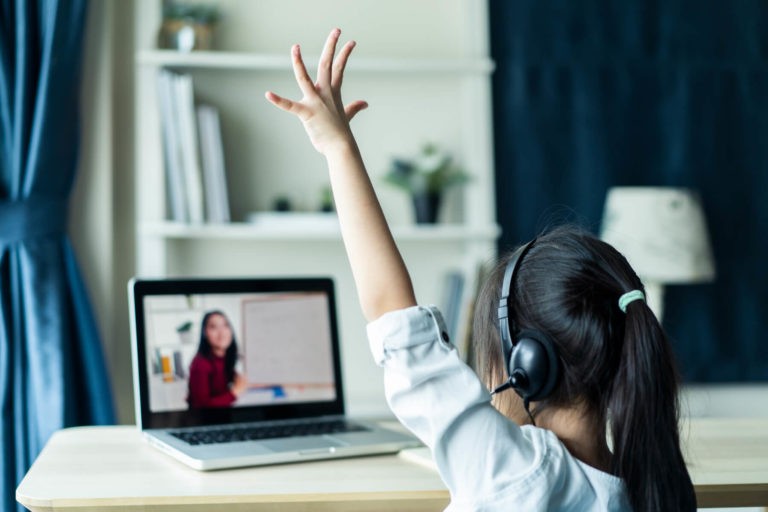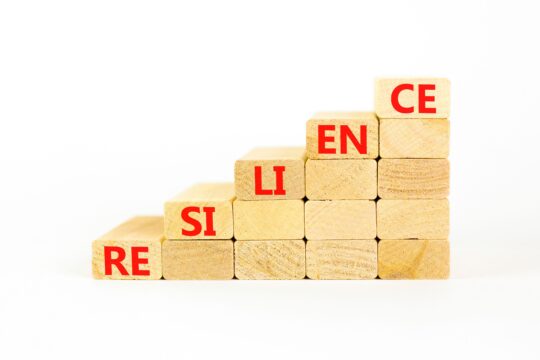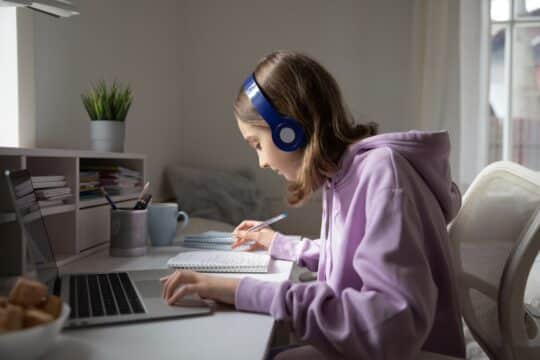Challenges Students with ADHD Face Remotely
Unfortunately, with the times that we are struggling through, our students are faced with learning in the virtual world and navigating through it in a way they’ve never done before. More and more schools are faced with having to deliver their instruction virtually to their students. This greatly impacts several students, including students with Attention Deficit Hyperactivity Disorder.
Students with ADHD have difficulty paying attention and staying focused on a specific task for an extended period of time. Students may also have difficulties with self-control, which often leads to distractibility within the classroom. Knowing that ADHD is a struggle for some of our students and applying the accommodations that we can easily put into place within our classrooms, such as preferential or flexible seating, extended time for tasks, and verbal and physical cues, may be enough to pull students back on track in the classroom; but all of this changes when students are not physically in the classroom and now learn virtually.
Distractibility is one of the biggest issues that students are facing when asked to learn from home. Students now have a computer in front of them that must be used as their learning tool as opposed to a source of entertainment. Instead, this is where their educational day starts and stops. Sitting at home, trying your very best to learn, listening to conversations happening in the other room, hearing the dog bark outside, or being pulled away by the television that is on are all normal things that happen within a home but can now contribute to distractibility as a child is trying to learn.
Students with ADHD also benefit from more hands-on activities that include moving around the classroom and being truly interactive with what they are learning. As students are now learning in the virtual world, this doesn’t mean that all of the students’ academic success must end. Instead teachers must get creative and think out of the box on ways to engage their students and make them feel as if they are still right there in the classroom.
Strategies for Students with ADHD
Student Expectations
First and foremost, just like any new thing that our students may experience, expectations must be reviewed with the class. As expectations are developed, educators must keep in mind the ages of the students as well as any attention issues they have while learning. Going over the expectations daily as well as using questions and answers to informally assess that the students are grasping the new “virtual rules” is the starting point when strategically planning the day and what the students’ tasks will be.
Schedules and Brain Breaks
When students enter into the virtual world, more and more we are seeing districts that want teachers to follow a structured school schedule throughout the day. The thought process behind this is that by following the school schedule students are still getting the “school” experience as teachers are treating the virtual world similarly to physical classroom.
As teachers closely follow the schedule and utilize all of the curricula programs that they would normally use, they must keep in mind that it is not reasonable to think that students can sit in front of a computer screen for seven hours a day. Allowing time for brain breaks is a strategy that can be used with our students, but knowing them well is the only way to really know what types of brain breaks would be beneficial for them.
Even though it may seem counterproductive, students who struggle with hyperactivity and attention issues may need more energized breaks, while other students in your class may need more relaxing deep breathing breaks to quiet their minds and gear up for what is still to come during their academic school day. It is important to strategically plan the brain breaks so that distraction and fatigue do not set in.
Check-Ins
Just as teachers may do a “check in” and “check out” when students are with them in their classrooms, this is a strategy that can be used during remote learning as well. Touching base and making sure that the students are doing ok academically and emotionally is very important. Having them share what is working for them and what they are struggling with will give teachers a clear idea of what needs must be met for the students. Making a small instructional change based off of the individualized check-ins with students is a strategy that may be beneficial for our students.
Connecting with Classmates
One key component that students do miss out on when they are learning virtually is their peer interactions. Often students struggle at home when they miss out on being with their friends and communicating during unstructured times throughout the school day. To replace times like this, teachers can plan unstructured breaks during their virtual learning. Turning all cameras on as well as giving students the opportunity to tell a joke, share different fun things they may have done, or playing a short game with them will allow time for peer interaction, laughs, and an overall sense of classroom community, as this is something they emotionally may need. For our younger students, teachers could do a “show and tell” type activity as a break, something students look forward to.
Adapting for Different Learning Styles
Throughout all of this, teachers may find what works one day may not work the next as students are remotely learning. Continuously trying new strategies will enhance the learning experience as students are learning from home. Keeping their day structured as well as trying to keep their learning routines as close to possible as what they would be if they were physically with you in the classroom will enhance our students’ virtual learning experience.
Teaching virtually is something new for most educators, so it is important to remember that this is new for our students as well. Handling each situation, each learning style, each disability, and each student gracefully is what will truly help them navigate through this learning platform.




